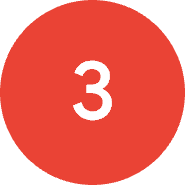
Pet Adoption is an animal shelter that offers pets adoption option and flow for people who would like adopting cats or dogs. The typical user is between 19 to 65 years old, and most users are family or students. Pet adoption goal is to let animals have a comfort and warm home.

This animal shelter, Pet Adoption, only has an adoption flow in the store but no online website. It's inconvenient and confusing for someone who would like to choose a specific breed of the animals as a pet within lots of selection.
Design a website for Pet Adoption to adopting flow of the animal shelter by providing clear navigation and offering a fast reservation process.
UX designer leading the Pet Adoption website design

Conducting interviews, paper and digital wireframing, low and high-fidelity prototyping, conducting usability studies, accounting for accessibility, iterating on designs and responsive design.
I conducted user interview, which I then turned into empathy maps to better understand the target user and their needs. I discovered that many target users treat pets as a family member and feel satisfied with their accompanying.
However, not all animal shelters have a website for people who would like to adopt a pet. The adoption flow is overwhelming and confusing to users. This caused a normally enjoyable experience to become challenging for them, defeating the purpose of adoption.

Adopting flow in the shelter in person is complicated, which results in confusing navigation

No enough information and comments of the animal shelter and the animals in the shelter online

Too many breeds with no classification to choose the favorite one in a short time
Problem statement:Paul is a 43-year-old dog man who needs a website of the animal shelter to select the breed because he want to adopt a dog as a pet to live with him.

I created a user journey map of Paul's experience using the site to help identify possible pain points and improvement opportunities.

Difficulty with website navigation was a primary pain point for users, so I used that knowledge to create a site map.
My goal here was to make strategic information architecture decisions that would improve overall website navigation. The structure I chose was designed to make flow simple and easy.

Next, I sketched out paper wireframes for each screen on the paper, keeping the user pain points about navigation, browsing, and checkout flow in mind.
Stars were used to mark the elements of each sketch that would be used in the initial digital wireframes.

Because Pet Adoption's customers access the site on a variety of different devices, I started to work on designs for additional screen sizes to make sure the site would be fully responsive.

Moving from paper to digital wireframes made it easy to understand how the website could help address user pain points and improve the user experience.
Prioritizing useful reserving flow of pet adoption was a key part of my strategy.


To create a low-fidelity prototype, I connected all of the screens involved in the primary user flow of adding an item to the cart and checking out.
At this point, I had received feedback on my designs from members of my team about things like placement of buttons and page organization. I made sure to listen to their feedback, and implemented several suggestions in places that addressed user pain points.

Write a short introduction to the usability studies you conducted and your findings.

There is no button to get back to the previous page while keying in the personal information.

The choice of reserving time to pick pets up is too less and the time spacing is too long.

During the checkout process, there wasn't a clear way for user to log in to their account to pre-fill previous billing and reserving info.
Based on the insights from the suability study, I made change to improve the site's checkout flow. One of the changes I made was adding a button to get back to the previous page in each flow steps. This allowed users more freedom to edit the information of reserving adoption without going through a complicate process to add or remove items.

Tomake the reserving flow even convenient for users, I add other choices buttons of time duration and extend the time spacing.


I included considerations for additional screen sizes in my mockups based on my earlier wireframes. Because users shop from a variety of devices, I felt it was important to optimize the browsing experience for a range of device sizes, such as mobile and tablet so users have the smoothest experience possible.

My hi-fi prototype followed the same user flow as the lo-fi prototype, and included the design changes made after the usability study, as well as several changes suggested by members of my team.


I used headings with different sized text for clear visual hierarchy

I used landmarks to help users navigate the site, including users who rely on assistive technologies

I designed the site with alt text available on each page for smooth screen reader access
Our target users shared that the design was intuitive to navigate through, more engaging with the images, and demonstrated a clear visual hierarchy.
I learned that even a small design change can have a huge impact on the user experience. The most important takeaway for me is to always focus on the real needs of the user when coming up with design ideas and solutions.

Conduct follow-up usability testing on the new website

Identify any additional areas of need and ideate on new features